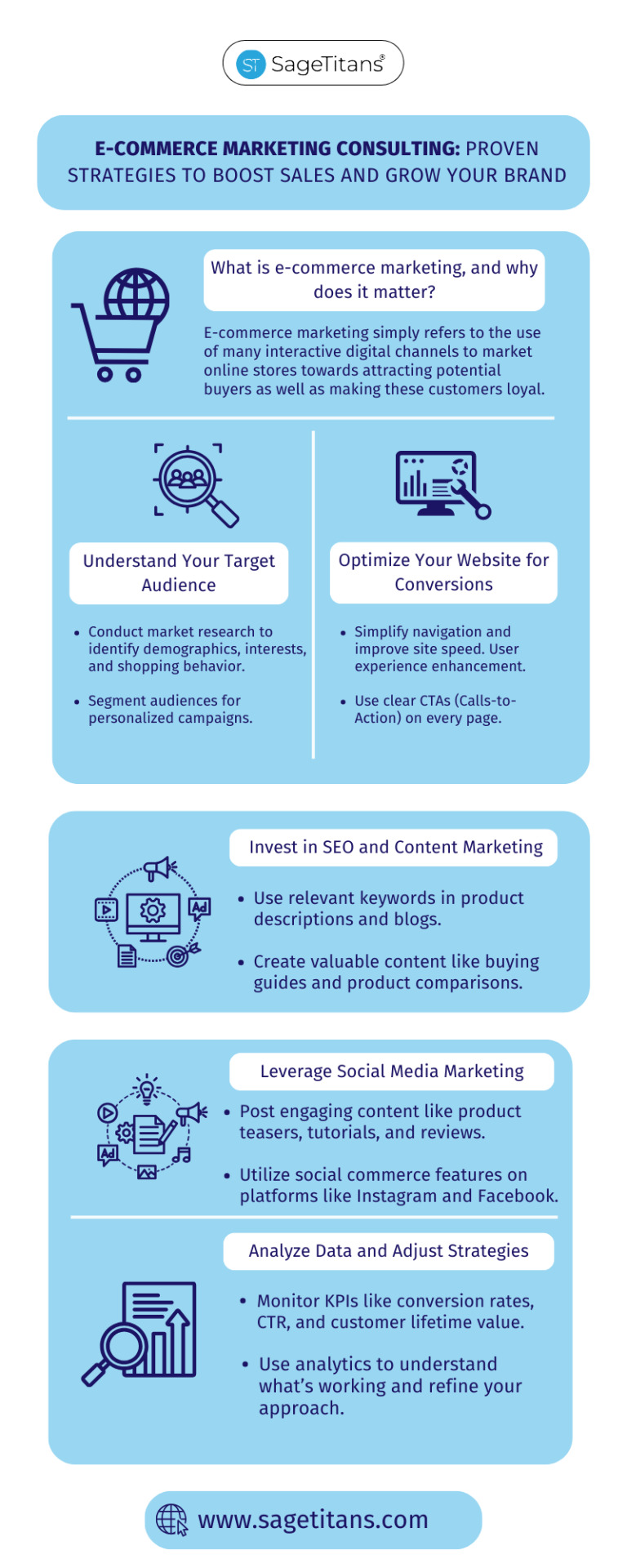#What is a digital marketing agency
Explore tagged Tumblr posts
Text
Top Digital Marketing Agency That Will Grow Your Business In 2023
Top Digital Marketing Agencies: A Comprehensive Guide Are you looking for a top digital marketing agency to help grow your business? If so, you’re in luck! In this comprehensive guide, we’ll take a look at the top digital marketing agencies in the world, including their services, experience, and track record. We’ll also provide tips on how to choose the right digital marketing agency for your…

View On WordPress
0 notes
Text
The Ultimate Debate: Graphic Design or Digital Marketing? Insights from Two Experts
Azizul: Yo, Abubokor! I’ve been thinking a lot lately... I know I’m all in on graphic design, but I’m curious. With your expertise in digital marketing, do you think it’s the better choice career-wise? Abubokor: Haha, I see where this is going! You know I’m all about digital marketing, but graphic design is a huge part of it, right? It’s tough to say one’s "better"—they both have their ups and downs depending on what you're looking for. Azizul: True, but I feel like digital marketing is kind of everywhere these days, especially with how businesses are all pushing for online visibility. But I love the pure creativity in design. I don’t know, sometimes I wonder if I’m missing out by not exploring marketing more. Abubokor: I totally get that. Digital marketing definitely has more “range.” You can do social media management, SEO, email marketing, and more. It’s all about driving results, and it's super dynamic. But here's the thing—every single digital marketing campaign relies on great design. Graphics, ads, videos—it's all about catching attention, and that’s where your skills come in. Azizul: Yeah, that’s true. Marketing needs design to grab eyeballs. But if I’m being real, I still enjoy the freedom and satisfaction that comes with making something completely from scratch—like logos, illustrations, and brand identities. You can’t really do that with marketing, right? It’s more about strategy and measuring outcomes. Abubokor: For sure, design is more about creating something beautiful and original. That’s why I respect your work so much! But digital marketing gives you that constant “rush” from seeing results in real time—click-through rates, conversions, engagement. You’re not just making things look good; you’re making them work for a brand. Azizul: That’s true. I guess marketing feels more numbers-based, and I’m not sure if I’d like that part. The idea of diving deep into analytics and figuring out which ads perform best… sounds like a lot of pressure. 😅 Abubokor: Haha, I get it! But honestly, once you learn it, it’s pretty satisfying. You get to experiment and see what clicks with an audience. It’s like finding the perfect formula for success. And the cool thing is, all your design skills come into play here too. You need good design to make your campaigns pop and connect with people. Azizul: Yeah, that does sound pretty cool. It’s like a full-circle thing. But at the same time, I don’t want to lose my focus on pure design. I mean, I could always work with marketing teams, right? I could bring my design skills to the table without diving fully into marketing myself. Abubokor: Exactly! That’s one of the best parts of digital marketing—it’s such a collaborative field. A lot of marketers need designers for their campaigns, and having both skill sets could make you even more valuable. Plus, you could take your designs and apply them in ways that help the marketing strategy succeed. It’s a win-win. Azizul: I love that idea! I could be a designer who works alongside marketers, understanding the full strategy, while still doing what I love. 🤩 Abubokor: Exactly, and if you ever wanted to dip into marketing, having that design background would set you apart. You’d already understand the importance of visuals in campaigns. Honestly, the two fields complement each other way more than people think. Azizul: That’s a solid point. Maybe I should consider learning more about the marketing side of things. Not as a full-time shift, but to expand my skills and work even more closely with marketing teams. Abubokor: That’s the spirit! And who knows? You might find a way to blend both worlds. It could make you unstoppable. 😉 Azizul: Haha, I like the sound of that! Thanks for helping me see the bigger picture, man. You always give me the best perspective. 🙏 Abubokor: Anytime, bro! Whatever path you take, I know you’ll crush it. Let’s just keep pushing the limits together. 🙌
#digital marketing#graphic design#digital marketing course#learn digital marketing#what is digital marketing#digital marketing agency#digital marketing vs graphic design#why graphic designing is ideal for digital marketing#graphic designer#digital marketing graphics#graphic design or digital marketing which is better#freelance graphic designer#digital marketing vs graphic design which is better 2023#graphic design for marketing
3 notes
·
View notes
Text
WHAT WE MANAGE IN PERFORMANCE MARKETING ?
PERFORMANCE MARKETING
Since PICKMYURL is a hypothetical platform or tool for performance marketing, the specific elements managed would depend on its features and functionalities. Without specific information about PICKMYURL, I can provide a general overview of what you might manage in performance marketing using a platform or tool like PICKMYURL: Campaign Management: Use PICKMYURL to manage your performance marketing campaigns, including creating, organizing, and monitoring multiple campaigns. This may involve setting campaign objectives, budgets, targeting parameters, and scheduling.
Targeting and Segmentation: Utilize PICKMYURL's targeting and segmentation capabilities to define and reach your desired audience. This may include demographic filters, interest-based targeting, location targeting, or other parameters to narrow down your target audience.

Ad Creation and Optimization: Use PICKMYURL to create and optimize your ad creatives. This may involve designing visually appealing ads, crafting compelling ad copy, selecting appropriate ad formats, and optimizing for better performance.
Conversion Tracking and Analytics: Implement PICKMYURL's conversion tracking tools to measure and analyze the performance of your campaigns. This allows you to track conversions, monitor key metrics, and gain insights into the effectiveness of your marketing efforts.
Landing Page Optimization: Leverage PICKMYURL's capabilities to create and optimize landing pages for better conversion rates. This may involve designing and testing different landing page layouts, headlines, calls-to-action, and forms to improve performance.
Reporting and Performance Analysis: Use PICKMYURL's reporting features to generate performance reports and analyze campaign data. This allows you to evaluate key performance indicators (KPIs), identify trends, and make data-driven decisions for optimization.
Budget Management: Utilize PICKMYURL's budget management tools to allocate and track your campaign budgets effectively. This may include setting budget limits, monitoring spending, and optimizing budget allocation based on performance metrics.
Optimization and Testing: Utilize PICKMYURL's optimization features and testing capabilities to improve the performance of your campaigns. This may involve A/B testing different ad variations, landing page elements, targeting parameters, or other components to identify the most effective strategies.
Please note that the specific features and functionalities of PICKMYURL may vary, and it's important to refer to the platform's documentation or reach out to their support team for precise information on what can be managed within the tool.
#Digital performance marketing agency list#Digital performance marketing agency in india#performance marketing agency india#best performance marketing agencies in india#performance marketing agency delhi#what is a performance marketing agency#performance marketing agency mumbai#performance marketing agency bangalore#pickmyurl
5 notes
·
View notes
Text
What is Digital Marketing? Benefits of Digital Marketing? Why should You hire a Digital Marketer?

Digital marketing refers to the use of digital channels and technologies to promote products, services, or brands to a target audience. It involves various online marketing tactics and strategies to engage potential customers, increase brand awareness, drive website traffic, generate leads, and ultimately boost sales and revenue.
Some common components of digital marketing include:
Search Engine Optimization (SEO): Optimizing websites and content to improve their visibility in search engine results pages (SERPs).
Content Marketing: Creating and distributing valuable, relevant, and consistent content to attract and retain a clearly defined audience.
Social Media Marketing: Promoting products and services on social media platforms to reach and engage with the target audience.
Email Marketing: Sending targeted emails to nurture leads and maintain customer relationships.
Pay-Per-Click (PPC) Advertising: Displaying ads on search engines and other websites and paying only when users click on the ads.
Influencer Marketing: Partnering with influencers or industry leaders to promote products or services.
Affiliate Marketing: Collaborating with affiliates who earn commissions for driving traffic and sales to your website.
Online PR: Engaging in online public relations activities to improve brand reputation and visibility.
Analytics and Data Analysis: Measuring and analyzing data to gain insights into the effectiveness of marketing campaigns and make data-driven decisions.
Benefits of Digital Marketing:
Global Reach: Digital marketing enables businesses to reach a vast global audience regardless of their geographical location.
Cost-Effectiveness: Compared to traditional marketing, digital marketing often offers a more cost-effective way to reach and engage with potential customers.
Targeted Audience: Digital marketing allows businesses to target specific demographics, interests, behaviors, and locations, ensuring that the message reaches the right people.
Measurable Results: Digital marketing efforts can be tracked and measured using various tools, providing insights into the effectiveness of campaigns and areas for improvement.
Personalization: With data-driven insights, digital marketing allows businesses to personalize their messages and offers to individual customers, increasing relevance and engagement.
Real-Time Engagement: Digital marketing facilitates real-time interactions with customers, enabling businesses to respond promptly to inquiries and feedback.
Higher Conversion Rates: The ability to target specific audiences and personalize messages often leads to higher conversion rates compared to traditional marketing.
Why hire a Digital Marketer:
Expertise and Knowledge: Digital marketers are trained professionals with expertise in various digital marketing channels and strategies. They understand the latest trends, algorithms, and best practices to create effective campaigns.
Time and Resource Efficiency: Outsourcing digital marketing tasks to a professional allows businesses to focus on their core competencies while leaving marketing responsibilities to specialists.
Objective Perspective: Digital marketers can offer an objective perspective on marketing strategies, as they are not as emotionally attached to the business as the owners.
Data-Driven Approach: A digital marketer will analyze data and metrics to optimize marketing campaigns, ensuring the best possible return on investment (ROI).
Adaptability: Digital marketers stay up-to-date with the ever-changing digital landscape and adapt their strategies accordingly.
Access to Tools and Resources: Professional digital marketers have access to premium tools and resources that can enhance marketing efforts.
Scalability: Digital marketing agencies can scale their efforts based on the business's needs and growth.
In summary, digital marketing is an essential part of modern business strategies. Its benefits, including global reach, cost-effectiveness, and measurable results, make it a powerful tool for driving business growth and success. Hiring a digital marketer brings expertise, efficiency, and a data-driven approach to help businesses navigate the digital landscape effectively and achieve their marketing objectives.

#digital marketing#freelance digital marketing#digital marketing salary#digital marketing agency#google digital marketing course#digital marketing course#types of digital marketing#what is seo in digital marketing#digital marketing analyst#digital marketing associate#digital marketing assistant#digital marketing analytics#digital marketing affiliate#digital marketing and ecommerce#advantages of digital marketing#about digital marketing#about digital marketing course#about seo in digital marketing#digital marketing business#digital marketing blogs#digital marketing basics#benefits of digital marketing#best digital marketing course#basics of digital marketing#best digital marketing agency#digital marketing company#digital marketing channels#digital marketing careers#career in digital marketing#digital marketing definition
6 notes
·
View notes
Link
5 notes
·
View notes
Text

#Digital Advertising vs Digital Marketing#digital advertising and digital marketing#what is digital advertising#types of digital advertising#what is digital marketing#types of Digital Marketing#digital marketing agency#what is digital marketing and advertising#Difference Between Digital Advertising & Digital Marketing#Liveblack
0 notes
Text
#what is seo#types of seo#off page seo#seo services#seo#digital marketing#social media marketing#emailmarketing#seo changbin#backlinks#on page seo#seo agency#seo marketing#ppc services
0 notes
Text
#search engine optimization#search engine optimization digital marketing#what is search engine optimization#best search engine optimization agency#search engine optimization services#search engine optimization company#seo#seo services#seo agency india#seo company in india#seo digital marketing#what is seo in digital marketing#seo company in jaipur#best seo company in jaipur#seo services in jaipur#seo agency in jaipur
1 note
·
View note
Text
Ecommerce Marketing Consulting: Proven Strategies to Boost Sales and Grow Your Brand.

E-commerce marketing consulting helps businesses create tailored strategies to boost sales, enhance brand visibility, and engage customers effectively. By utilizing tools like SEO, email marketing, and social media, along with proven techniques such as targeted funnels, automation, and data-driven insights, brands can achieve sustainable growth. With experts like Sagetitans.com, transform your online presence and maximize ROI with actionable strategies and personalized guidance.
#what is ecommerce marketing#ecommerce marketing consulting#ecommerce consultants private limited#what is ecommerce marketing strategy#what is an ecommerce consultant#ecommerce marketing consulting services#ecommerce marketing digital#ecommerce marketing techniques#ecommerce marketing funnel#ecommerce marketing automation#ecommerce marketing tools#ecommerce marketing plan#best ecommerce marketing agency
0 notes
Text
DIGITAL MARKETING SERVICES
Boost your online presence with diyadigital's professional digital marketing service. Our team of experts will help you reach your target audience and achieve your business goals.
#What is seo in digital marketing#Freelance digital marketing#What is online marketing#Web marketing#Ecommerce marketing agencies#Digital marketing company
1 note
·
View note
Text
5 Digital Marketing Trends Revolutionizing E-commerce in Canada

The digital landscape is fast-changing, and Canadian e-commerce businesses need to be at the forefront in order not to be left behind. This article will look into five innovative trends in digital marketing that are revolutionizing the retail sector in Canada. By embracing these innovations, e-commerce brands are better placed to improve customer experience, drive sales, and entrench their position in the market.
The State of E-commerce in Canada
E-commerce in Canada has rapidly improved in the recent past. This increase brings on board some stiff competition, with customer expectations increasing. In these regards, businesses in Canada have to employ the strategies of digital marketing innovation that will set them apart in this competitive market.
Artificial Intelligence and Personalization

AI Powered Product Recommendations
Artificial Intelligence has changed the face of how any e-commerce understands and caters to its customers. Such algorithmic Artificial Intelligence analyses huge amounts of data, which include browsing history, purchasing patterns, and demographic information, and then returns very personalized product recommendations. This level of personalization will enrich the shopping experience and increase both the average order value and customer loyalty.
AI-driven recommendation engines have already been integrated into e-commerce platforms in Canada, like Shopify. Now it is even possible for small businesses to use this powerhouse technology. Showing customers products that they love will increase conversion rates and customer satisfaction.
Chatbots and Customer Service
AI-driven chatbots have revolutionized customer service within the e-commerce industry. Such intelligent virtual assistants provide instant support to customers, answer queries, offer product information, and even guide checkout procedures. Canadian businesses that have adopted chatbots report improved customer satisfaction rates and reduced support costs.
Advanced chatbots can also look through customer interactions to understand trends and preferences that could come in very handy during product development and as part of a marketing strategy. The more natural language processing technology advances, the more sophisticated chatbots will become, further improving the online shopping experience.
Voice Search Optimization
Rise of Voice Assistants
Voice-activated devices are very pervasive in most Canadian households. With smart speakers and voice assistants like Google Home and Amazon Alexa continuing to see greater adoption, voice search is fast becoming a paramount consideration for e-commerce.
Now, Canadian customers use voice commands to look for products, compare their prices, and even make purchases. It's this change in search behavior that brings challenges and, simultaneously, opportunities to online retailers.
Adapting SEO for Voice Queries
Voice search means that Canadian e-commerce businesses must optimize content for these voice searchers if they want to capitalize on the trend. It means focusing on long-tail keywords and natural language phrases mimicking the way people speak—not type.
Moreover, formatting the content to answer frequently asked questions increases the chance of becoming a voice search result. Those Canadian businesses that will make a shift in their SEO strategies to accommodate voice search will gain an upper hand in growing this channel to reach customers.
Augmented Reality (AR) in Online Shopping

Virtual Try-Ons
Augmented reality has happened to be a real game changer in e-commerce, more so in the spheres of fashion and beauty. Canadian retailers are increasingly using augmented reality to give their customers a try-on experience before they make any purchase, by seeing how the product will look on them.
This immersive technology bridges the gap between online and in-store shopping experiences, reducing return rates and increasing customer confidence in their purchases. As AR technology becomes more accessible, even smaller Canadian e-commerce businesses can implement those features to make an online store enhanced.
AR Product Visualization
Besides fashion and beauty, AR finds applications across a wide array of product categories. For example, furniture retailers make use of it to let customers see how items may look in their homes. This technology guides customers toward better decision-making, thus ensuring higher rates of satisfaction and reduced returns.
In Canadian e-commerce businesses, it is reported that AR for the visualization of products increases their website's engagement time and higher conversion rate. The more consumers are used to these interactive experiences, the greater the integration of AR is going to be a standard feature in online shopping.
Social Commerce Integration
Shoppable Posts
What began as basic marketing channels, social media has grown into sales platforms, on which Canadian e-commerce businesses are capitalizing with the creation of shoppable posts on visual-first platforms like Instagram and Facebook.
Basically, users can buy a product directly from social media content, never having to leave the app. In this seamless integration lies less friction in the buying process, leading to higher conversion rates and impulse purchases.
Influencer Marketing on Social Platforms
One can see that the relevance of influencer marketing is there for the greater part of most strategies in e-commerce for Canada. However, at the same time, some sort of subtle shift in attention towards micro-influencers and authentic collaborations has been gained. This turns Canadian brands to partner with influencers who best suit their brand values and target demographics for more organic and powerful promotions.
Social platforms further this trend by adding features to bring any influencer partnerships into the bright light of measurement. This will aid Canadian e-commerce businesses in having a better idea of the ROI from their influencer marketing efforts and refine strategies accordingly.
Sustainable and Ethical E-commerce Practices
Eco-Friendly Packaging
Most Canadian consumers are drifting toward considering sustainability during a purchase. It is expected that e-commerce businesses will move toward eco-friendly means of packaging. From biodegradable materials to minimalist designs that reduce waste, the trend in sustainable packaging becomes a key differentiator in the market.

Not only does this appeal to the environment-minded consumer, but often it also creates cost savings in shipping and materials. For Canadian e-commerce brands touting their sustainability practices within marketing, brand perception and customer loyalty usually follow suit.
Transparent Supply Chains
It's not just about the packaging; it's about everything. There are ethical considerations right from sourcing to the supply chain. Canadian consumers are interested in knowing the source of the product and under what conditions it was produced. E-commerce businesses meet this demand by providing information related to their sourcing and manufacturing processes in detail.
Blockchain technology is quickly maturing as a very powerful tool for supply chain transparency. Canadian e-commerce businesses can leverage blockchain solutions, allowing customers to track information about the origin and journey of products. It builds trust and justifies a premium price; therefore, making goods produced ethically attractive.
Connected by the wired world of technological advancement and alterations in consumer preference, the pace of e-commerce within Canada is changing rapidly. Assuming the top five digital marketing trends to be AI and personalization, voice search optimization, augmented reality, integration of social commerce, and sustainability practices, Canadian online stores could set up a pathway of success within a competitive market.
#digital marketing trends#digital marketing#what is digital marketing#marketing trends 2023#marketing#digital marketing course#digital marketing strategy#canada ecommerce#digital marketing trends 2023#ai in marketing#ecommerce#digital marketing interview questions#online marketing#e-commerce trends#digital marketing agency#digital marketing tutorial for beginners#digital marketing for restaurants#digital marketing full course#digital marketing 2024
1 note
·
View note
Text

Optimize your website using effective digital marketing strategies to enhance visibility and rank your website higher in search engine results for better traffic.
#Online discussion forum#letsdiskuss#digital marketing#digital marketing agency#what is digital marketing#digital marketing jobs#freelance digital marketing#marketing digital#digital marketing company#digital marketing course#digital marketing services
0 notes
Text

Flat Discount 20% off
...............Best Services.................
Digital Marketing
Branding Design
Development
Branding Design
#digital vishist#digital marketing course#learn digital marketing#what is digital marketing#digital marketing tutorial for beginners#digital marketing career#digital marketing training#digital marketing basics#digital marketing explained#digital marketing agency#digital marketing tutorial#digital marketing full course#digital marketing for beginners#social media marketing#how to learn digital marketing#how to start a digital marketing agency
1 note
·
View note
Text
#best digital marketing agency in new delhi#top 20 digital marketing agency new delhi 2024#best seo agency delhi#seo services near me#Benefits of Performance Marketing...#Why Performance Marketing is Important#What is Performance Marketing??#Cost-Effective#Targeted Reach#Improved ROI
0 notes
Text

#Digital Advertising vs Digital Marketing#digital advertising and digital marketing#what is digital advertising#types of digital advertising#what is digital marketing#types of Digital Marketing#digital marketing agency#what is digital marketing and advertising#Difference Between Digital Advertising & Digital Marketing#Liveblack
0 notes
Text
What is the impact of artificial intelligence on e-commerce?
Understanding the influence of artificial intelligence (AI) on e-commerce is essential in today’s digital landscape. AI technologies are reshaping how businesses operate online, from personalized shopping recommendations to efficient inventory management. This article delves into the multifaceted impact of AI on e-commerce, exploring its benefits and transformative potential.
Know more https://www.pcdoctorsnet.com/what-is-the-impact-of-artificial-intelligence-on-e-commerce/

#What is the impact of artificial intelligence on e-commerce#ai#artificial intelligence#ecommerce website design#ecommerce#digital marketing#usa#seo#seo services#digital marketing services#social media marketing#best digital marketing company#seo company#marketing#business#digital marketing company#digital marketing agency#supply chain management#supply chain#inventory management#PC Doctors .NET#Strategies#payment processing#customer retention
0 notes